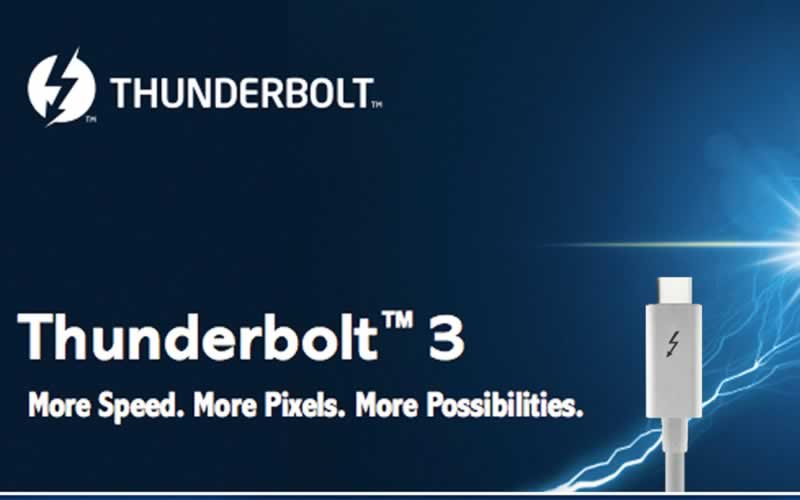For convenience and portability laptops nowadays are increasingly becoming slimmer. Due to this trend the current I/O ports like VGA, HDMI, and the 0.3-inch USB Type are no longer applicable for the slender physique of these laptops. To remedy this the USB-C interface was introduced.
The USB-C interface which is also known as USB 3.1 or USB Type-C is now on the Apple MacBook and the latest Google Chromebook Pixel. It is twice as fast as USB 3.0 which can be plug on different orientation. On the otherhand, however, there is an additional resource which doesn’t compete with the USB-C. Introduced by Intel it is the Thunderbolt 3.
THUNDERPORT 3 CAN:
Data Transfer at up to 40Gbps
It is twice as fast as the 20Gbps throughput speed of Thunderbolt 2, and four times as fast as the 10Gbps of USB-C and the original Thunderbolt interface.
Connection Wise
The thunderbolt 3 will let you connect to speedy hard drives, various displays which includs 4K and 5K resolutions, and other peripherals, like PCIe Gen 3 expansion cages, to desktop or laptop.
Work Well With The Same Shaped Port as USB-C
This means that it is compatible with USB-C cables and devices.
Saves Space
With Thunderbolt 3 and USB 3.0 ports in old model laptops the space is wasted since both ports perform similar task. The task is to connect peripherals to the computer regardless of what the speed is. While the Thunderbolt 3 work in the same exact physical ports as USB-C. This means that no more additional hole needed for this one particular connector.
However, Thunderbolt 3 port has circuitry behind it to allow faster Thunderbolt 3 throughput rates. Thunderbolt 3 ports are technically backward-compatible with USB-C devices. Although, all USB-C devices can be plugged into, and will work in, a Thunderbolt 3 port, but it will transfer data at the slower USB-C speed.
Intel’s Thunderbolt 3 is still in the works. There is no pricing release yet but the company is shares that the Thunderbolt 3 can already be on premium and performance laptops later this year.
